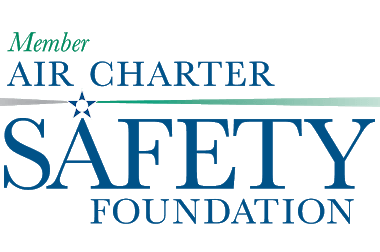
Air travel changed in 2020. Dramatically.
The things we used to complain about, like baggage fees and overhead bin space, dwarf concerns we have today because of COVID-19.
November is National Aviation Month, and there might not be a time when the aviation industry has evolved as much as what we’re experiencing today. The only exception might be 1903, when Wilbur and Orville Wright piloted that first successful flight.
Simply stated, air travel is just different now. Passengers on commercial airlines are concerned for their safety, and rightfully so. Before the pandemic, we could board an airplane and feel completely confident in the skills of our pilots and the safety of our aircraft. And we still can – that has not changed.
However, it’s impossible to practice social distancing on a commercial airplane. During the 2019 fiscal year, airlines reported a passenger load factor of 84%. That percentage dropped significantly this year in March and April. Demand plummeted, allowing airlines to temporarily block rows and middle seats. By May, airlines began consolidating routes. By late summer, commercial jets once again were packed despite coronavirus cases spiking in many states. Photos of passengers sitting shoulder-to-shoulder, just like pre-pandemic days, went viral on social media.
Commercial aviation is an industry built on volume, much in the same way that subway trains and buses operate. You need to fill jets, trains and buses with paying customers to generate revenue.
Industry experts believe it may be years before commercial aviation rebounds. The Lee County Port Authority recently delayed its $250 million terminal expansion project that’s been in the works for years.
In December 2019, Conde Nast Traveler published an article titled “7 ways air travel will change in 2020.” If only we knew then what we know now... As 2020 concludes, here are seven ways COVID-19 has changed air travel:
Grounds crews have minimal time between commercial flights to refuel, remove waste and restock snacks and beverages. Now, airline employees also are charged with sanitizing aircraft between flights. Crews use either a disinfectant fogger or go seat to seat with sanitizing wipes and spray. Magazines have been removed to expedite the cleaning process.
Read more: See how Elite Jets is keeping passengers safe
Ticket counters, security checkpoints and PA announcements offer reminders to maintain social distance. Some airport concessions remain closed or modified their hours of operation. Boarding and disembarking procedures have been tweaked. Onboard, however, passengers can have a dozen or more people within their six-foot social distance bubble.
Hot meals and sandwiches are a rarity on most domestic flights, even in first class. In fact, coach passengers do not even have options to buy meals or alcohol on some domestic flights. They also cannot browse through the Sky Mall magazine. Recently manufactured aircraft are equipped with personal television screens, but future on-board entertainment might be limited to Wi-fi streaming to minimize touchpoints.
Airlines still serve destinations from coast to coast. However, routes might only be available once daily, or even just two or three times weekly. Airlines have laid off or furloughed tens of thousands of workers to trim payroll. This reduced schedule allows airlines to fill jets, but requires passengers to be flexible with their travel plans.
Airlines have used the hub-and-spoke system for decades to maximize passenger loads. In the future, nonstop routes between non-hub or non-focus airports could be few and far between.
Data is guiding airline decisions. Rather than fly two half-empty flights, airlines are canceling one and moving all passengers to the remaining flight. Again, that requires more flexibility on behalf of passengers. In return, airlines have begun waiving change fees for many types of tickets.
Whether it’s for business or pleasure, people still need to get from Point A to Point B. Flying is the quickest travel option. Affluent travelers are creating unprecedented demand for alternatives. Flying privately neutralizes some of the negatives of flying commercially while offering safety reassurance, convenience and value to families and business partners who can reserve the entire jet for their travel party. Charter companies also welcome pets, don’t impose baggage limits and still offer a full selection of onboard amenities. An additional benefit is that private jets can fly into executive airports, like Naples Airport or Page Field. Those airports are less crowded and oftentimes are closer to passengers’ final destination than an international airport.
READ MORE: First time flying on a private jet? Here’s what to expect
This year has been challenging for many industries, especially aviation. However, air travel remains an essential part of American life. Charter companies and commercial airlines stand ready to safety transport passengers daily to their final destination.
- This blog was adapted from an article originally drafted by Stephen Myers, executive vice president at Elite Jets. The article was also featured in The Naples Daily News and The New-Press.



